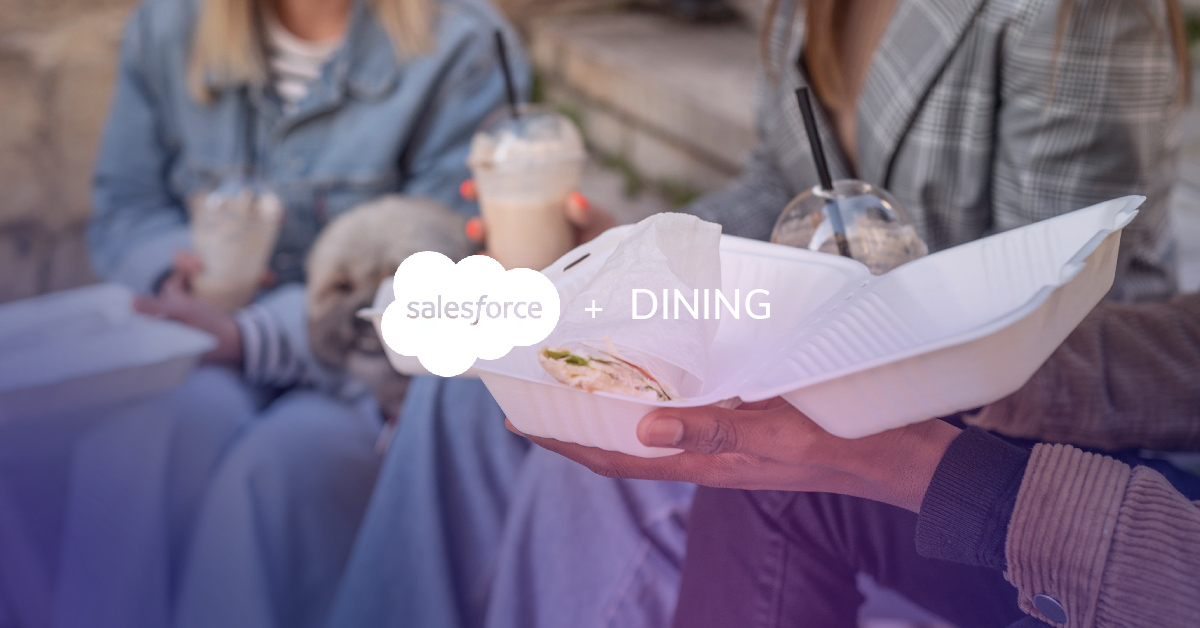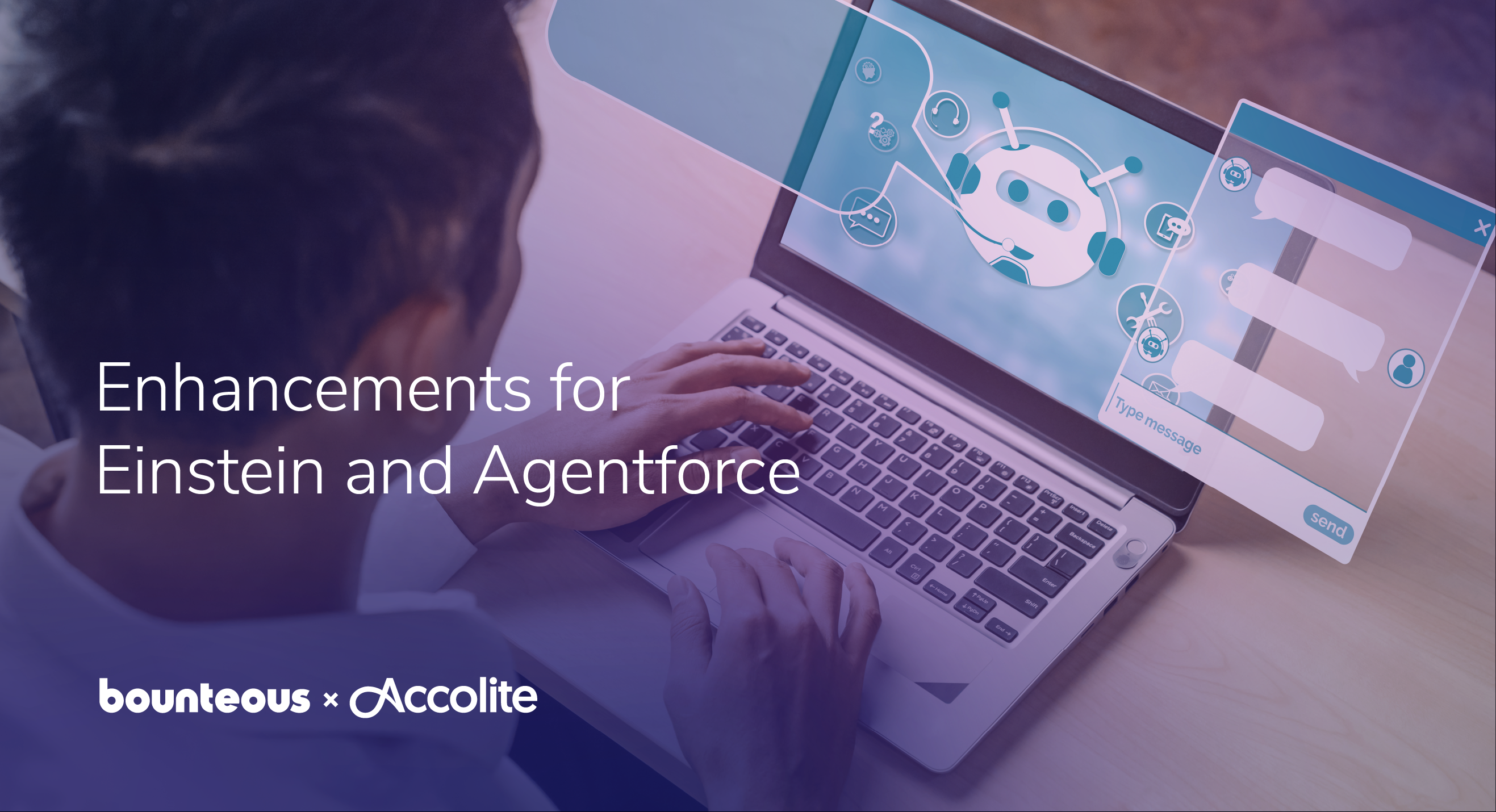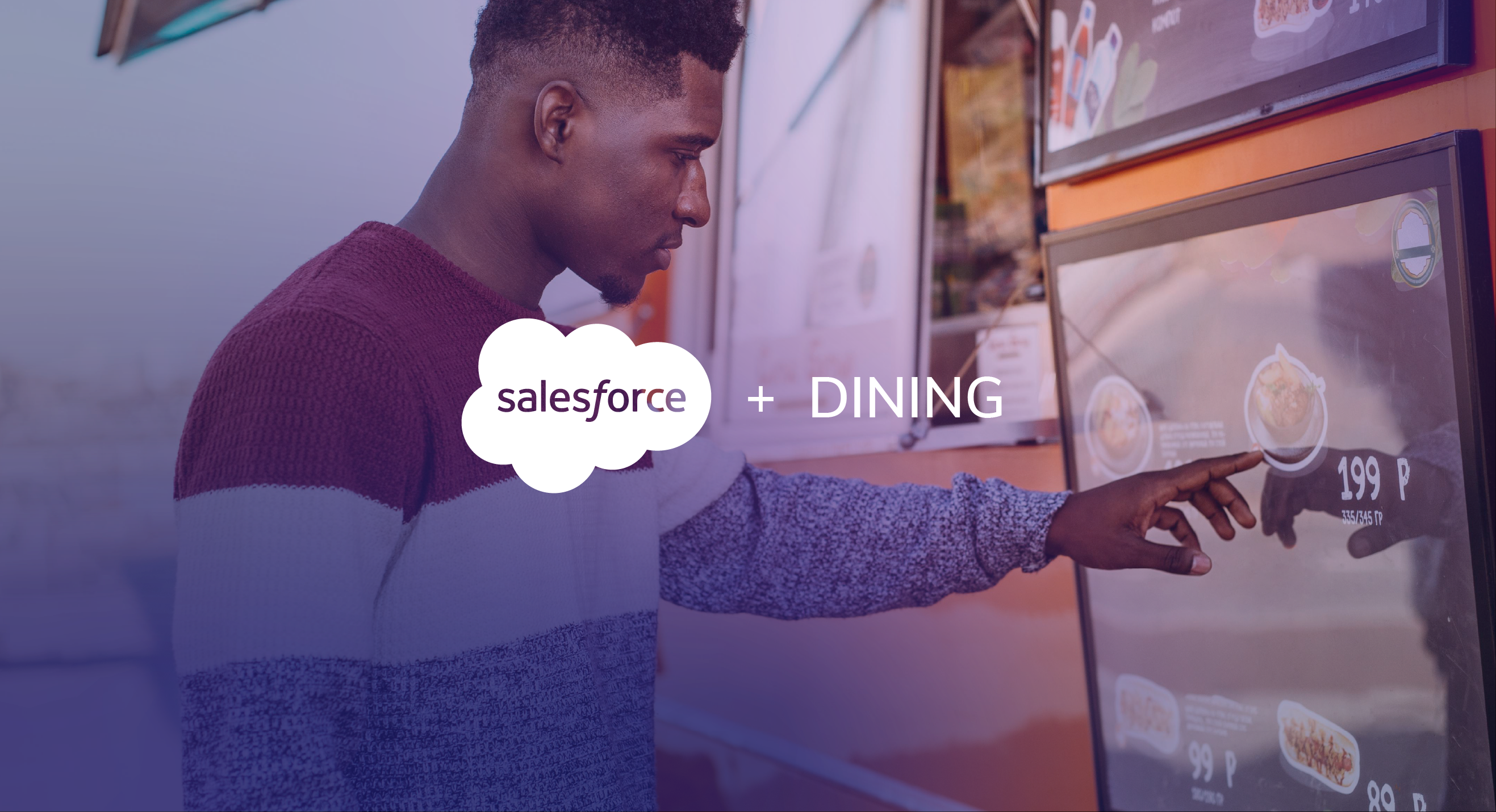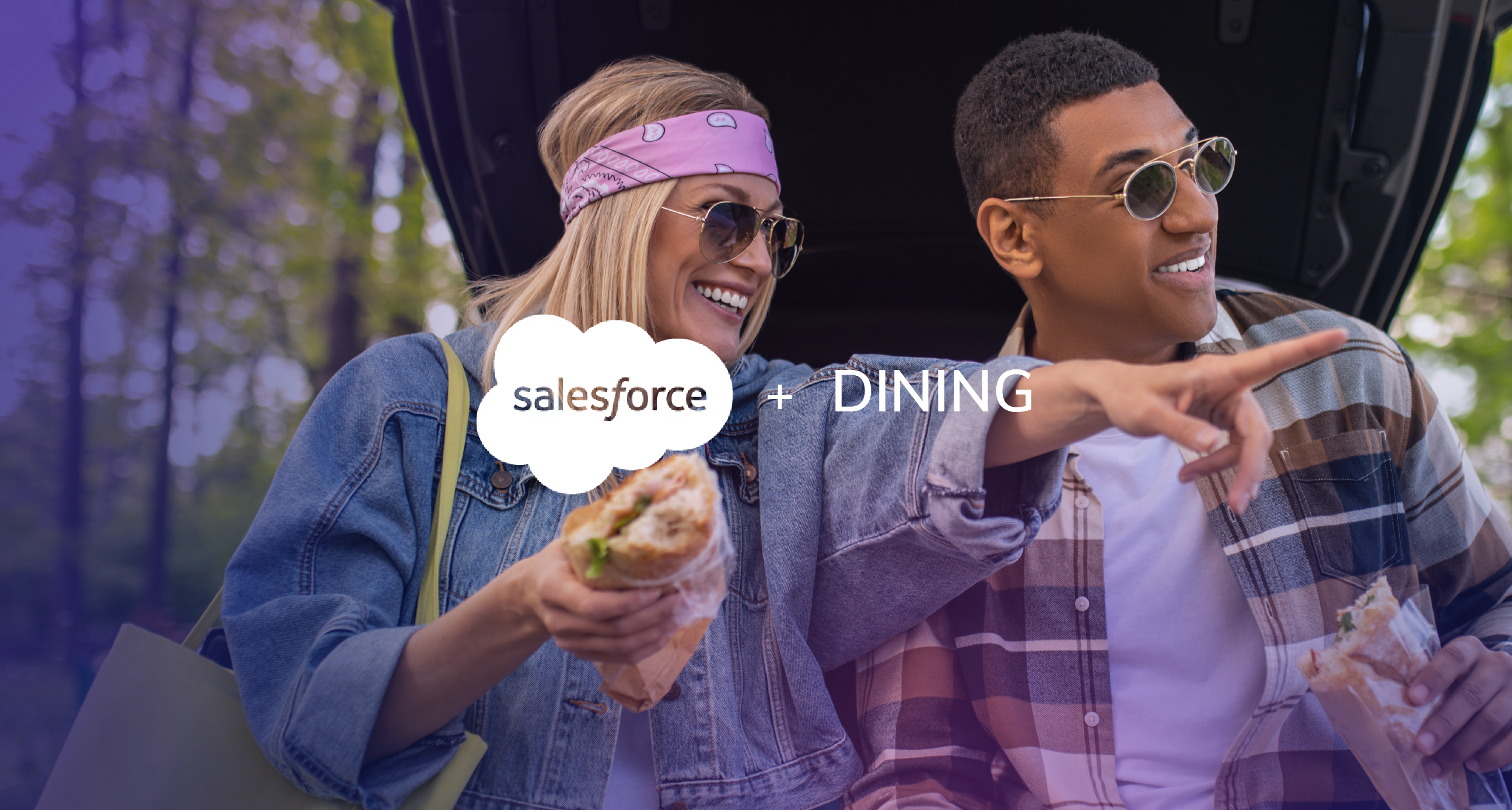Salesforce Marketing Cloud Identifies Key Dining Segments for Personalized Loyalty Marketing

In the competitive dining industry, tailoring your marketing efforts to meet the needs and preferences of your loyal customers is vital for success. Customer segmentation makes it easier to provide personalized experiences at scale, and segmented marketing campaigns have been shown to generate an upwards of 760% increase in revenue.
By strategically using your customer data and analytics reporting, platforms like Data Cloud can provide valuable insights into various customer profiles, including dining habits, dietary preferences, purchasing behaviors, and feedback. When unified in Salesforce CRM, these data points provide a comprehensive view of your customers. This enables marketing teams to create highly-targeted campaigns for any channel including app, web, email, SMS text, push notifications, and social posting in Salesforce Marketing Cloud (SFMC).
Why Segmentation Works for Loyalty Marketing
While every customer is unique, there are similarities that group customers into particular segments. Creating these customer segments from Data Cloud to publish and use in SFMC and Marketing Cloud (MC) Personalization is an essential practice for targeted marketing at scale. This allows for the delivery of personalized content to different groups of customers based on their unique needs, which significantly improves engagement, conversion rates, and overall customer satisfaction.
Segmentation also provides better resource allocation by optimizing marketing resources. Instead of sending out generic, mass messages that often receive low engagement, marketers can focus on crafting messages for high-value segments that are more likely to convert. Personalized emails have 6x higher transaction dates versus non-personalized emails.
For example, you might identify segments such as frequent diners, weekend visitors, and health-conscious customers. Through personalization, SFMC creates a cohesive omnichannel experience that allows dynamic content tailored to each segment throughout its purchase journey. From the moment a guest opens their app to the second they check out to the post-purchase email everything is specific to their unique preference. This marketing segmentation approach ensures that campaigns are relevant, engaging, and effective.
Frequent diners might appreciate loyalty programs, remembering past orders, and early access to new menu items. Weekend visitors might respond better to personalized invitations for weekend events, special discounts to dine on weekdays, and curated dining experiences. Health-conscious customers might be more interested in nutritional information, healthy menu options, being immediately directed on the app to menu items like gluten-free or vegetarian-only, and promotions related to wellness events.
Once segments are created, marketing automation can play a pivotal role in streamlining communication and delivering timely, automated triggered personalized messages to customers. Seventy-seven percent of marketing ROI comes from segmented, targeted, and triggered campaigns. Use cases for this include setting up automated reminders for upcoming events, sending personalized offers and experiences based on past dining behaviors, and following up after dining experiences to gather additional feedback. This enhances the customer experience and builds a stronger relationship with your brand.
How Segmentation Works in Data and Marketing Cloud
Creating targeted audiences faster, without structured query language (SQL) or requesting data, is a huge time saver for your marketing team. With generative AI in Data Cloud and SFMC, you can now translate plain language descriptions into functional segments, eliminating the need for large data requests. This allows teams to build and prioritize audiences effortlessly using waterfall segmentation, ensuring you avoid over-marketing to guests.
Data Cloud puts data into the hands of marketing teams that are non-technical for communication, analysis, and media sends without the need to request from your data analyst or technical team. This puts the power into the marketer’s hands.
With Einstein AI, SFMC, leverages data from various sources to enhance your marketing efforts. It gathers information from:
- Customer profiles
- Behavioral data (mobile interactions, customer service, menu selections))
- Engagement data (email, clicks, website visits)
- Transactional data (purchase history including in-store, online, kiosk, handheld, tabletop orders, and waitlist/reservations)
- Social interactions and other engagement metrics
Einstein AI leverages advanced machine learning algorithms to analyze data, uncovering patterns and trends among various customer segments. By examining common attributes and behaviors, it assigns predictive scores to individual customers, indicating their likelihood to engage, convert, or churn. These scores are based on historical data and predictive models.
Segmentation Measurement and Analysis
A key advantage of segmentation is the ability to precisely measure and analyze your marketing efforts. By monitoring campaign performance across various segments, you can uncover valuable insights into what resonates best with each group, to allow continuous strategy refinement. This data-driven approach ensures marketing initiatives are always in sync with customer preferences and business objectives.
Segmentation not only enhances marketing efficiency, it also facilitates better decision-making. With a clear understanding of customer segments, you can make informed choices about menu development, pricing strategies, and promotional activities. This holistic approach ensures that every aspect of your business is aligned with the needs and expectations of your customers. Thirty-three percent of marketers strongly agree that they gain insights quickly enough to make impactful decisions by leveraging AI.
With predictive intelligence, your data is analyzed to identify patterns and predictive forecasts to offer suggestions for optimizing your marketing strategy to meet the needs of each customer segment.
Personalized Loyalty Program Messaging with Segments
Once segments are defined, you can tailor loyalty initiatives to meet guests’ unique preferences and behaviors to create marketing strategies that resonate with each segment across multiple channels, rather than adopting a one-size-fits-all approach.
To do this you can think of the following five basic steps: Collect, Define, Develop, Implement, and Monitor.
Example for Implementing a Personalized Restaurant Loyalty Program
- Collect and analyze data from the various sources you use in your restaurant chain including:
- Point-of-sale (POS) and online ordering systems to track purchase history.
Online reservation systems to monitor dining frequency.
Social media interactions to gauge customer preferences and feedback.
Loyalty program sign-ups are used to gather demographic information and determine what drives guest behavior to increase conversions by analyzing trends.
- Point-of-sale (POS) and online ordering systems to track purchase history.
- Define customer segments based on the data, for example, identifying three key restaurant customer segments:
- Frequent Diners: Customers who visit the restaurant multiple times a week and during specific times of the day.
- Weekend Visitors: Customers who primarily dine on weekends.
- Health-Conscious Eaters: Customers who prefer healthy menu options or have dietary restrictions.
- Develop tailored rewards specific to each segment’s typical behaviors and provide them with a reward that goes beyond traditional discounts or offers.
- Frequent Diners: Offer a "Dine 5 Times, Get 1 Free" program, and provide exclusive access to new menu items before they are available to the general public.
- Weekend Visitors: Offer a “Weekday Special” discount of 15% off on Mondays and Tuesdays to drive a different behavior to interact with your brand on days they typically do not dine at your restaurant.
- Health-Conscious Eaters: Offer a "Healthy Choice" loyalty where customers receive specific communications for healthy eating and send out surveys to earn points for purchasing healthy menu items. Once they accumulate a certain number of points, they receive a free healthy meal.
- Implement personalization solutions using a CRM system integrated with POS and online reservation systems to manage loyalty programs. Marketing automation tools are used to send personalized emails and push notifications to each segment:
- Frequent Diners receive notifications about new menu items and their progress towards earning a free meal.
- Weekend Visitors receive reminders and incentives about dining during the week instead of on a Saturday or Sunday.
- Health-conscious eaters receive updates on new healthy menu options and are invited to specific events based on their dietary preferences.
- Monitor the performance of your loyalty campaign and adjust if needed based on key success metrics. For example,
- Redemption rates: Track how often customers redeem their rewards.
- Customer feedback: Collect feedback through surveys and social media to understand customer satisfaction.
- Repeat visit frequency: Measure how often customers return to the restaurant.
- Notifications: Send out information on new food releases or new flavors based on the flavor profiles they typically choose to re-engage or have them try something new.
- Information: Inform your customers based on location specifics, restaurant closings, and weather-based offers to provide awareness and engagement during weather events.
- Gamification: Games or activities based around their favorite menu categories or unlocking new menus by trying items from categories they don’t typically choose.
Leveraging customer segmentation, you can create a personalized loyalty program that enhances customer experience, increases retention, and drives higher revenue. HubSpot found that personalized call-to-actions (CTAs) convert 202% better than a standard CTA. With our example segments, these personalized options leave Frequent Diners feeling appreciated and incentivized to visit more often, Weekend Visitors are attracted by special discounts during days of the week they typically do not dine with your brand, and Health-Conscious Eaters feel their dietary preferences are valued, leading to higher satisfaction and loyalty.
Identifying and leveraging customer segments for personalized marketing in dining is a powerful strategy that can drive significant business growth. Loyalty programs increase customer retention rates by 5% which translates up to 25-95% in increased profits.
Personalization strategies ensure customers receive tailored experiences across every platform. Omnichannel marketing can push customers to engage and sign up, providing a seamless welcome experience. With MC Personalization, customers recognize your brand consistently, whether they interact through kiosks or other methods.
Data Cloud plays an integral role by bringing in data to create segmentation, which is then published to MC Personalization. This back-and-forth communication between Data Cloud and MC Personalization ensures that marketing efforts are data-driven and highly effective, with MC Personalization serving as the front end for customer interactions.
Using the power of artificial intelligence, data analytics, and marketing automation tools such as Salesforce CRM and SFMC empowers your marketing team to create highly-targeted campaigns that resonate with customers. This approach allows for optimized resource allocation and enhances overall customer satisfaction. Leveraging these advanced tools, you can boost engagement and conversion rates, foster long-term loyalty, and drive sustainable business success.


